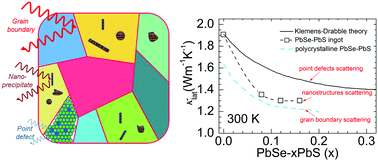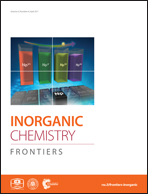Enhancing thermoelectric performance of n-type PbSe via additional meso-scale phonon scattering
Abstract
The study of the lead chalcogenides system has been extended throughout the history of thermoelectrics due to their extraordinary physical and chemical properties. Compared with PbTe, PbSe has been drawing increased attention because it combines several attractive features, such as higher melting point, lower cost, and higher operation temperatures. The all-scale hierarchical structures were successfully applied to p-type PbSe systems, and a fascinating ZT value was achieved by effectively reducing the lattice thermal conductivity, which could be attributed to phonon scattering with a spectrum of wavelengths. However, the lattice thermal conductivity also reached about 1.0 W m−1 K−1 in the n-type PbSe system, which is very high compared with p-type PbSe that has been reported. In this study, by means of introducing mesostructures, the lattice thermal conductivity was efficaciously lowered from ∼1.3 W m−1 K−1 to ∼1.2 W m−1 K−1 at room temperature and ∼0.9 W m−1 K−1 to ∼0.6 W m−1 K−1 at 923 K for the n-type PbSe–PbS system. Correspondingly, a marked increase in ZT value from ∼1.3 to ∼1.5 at 923 K was observed, which indicated that the applications with superior conversion efficiencies on a large scale could be achieved from systems consisting of abundant and inexpensive chemical elements.

- This article is part of the themed collection: Inorganic Chemistry Frontiers HOT articles for 2017

 Please wait while we load your content...
Please wait while we load your content...